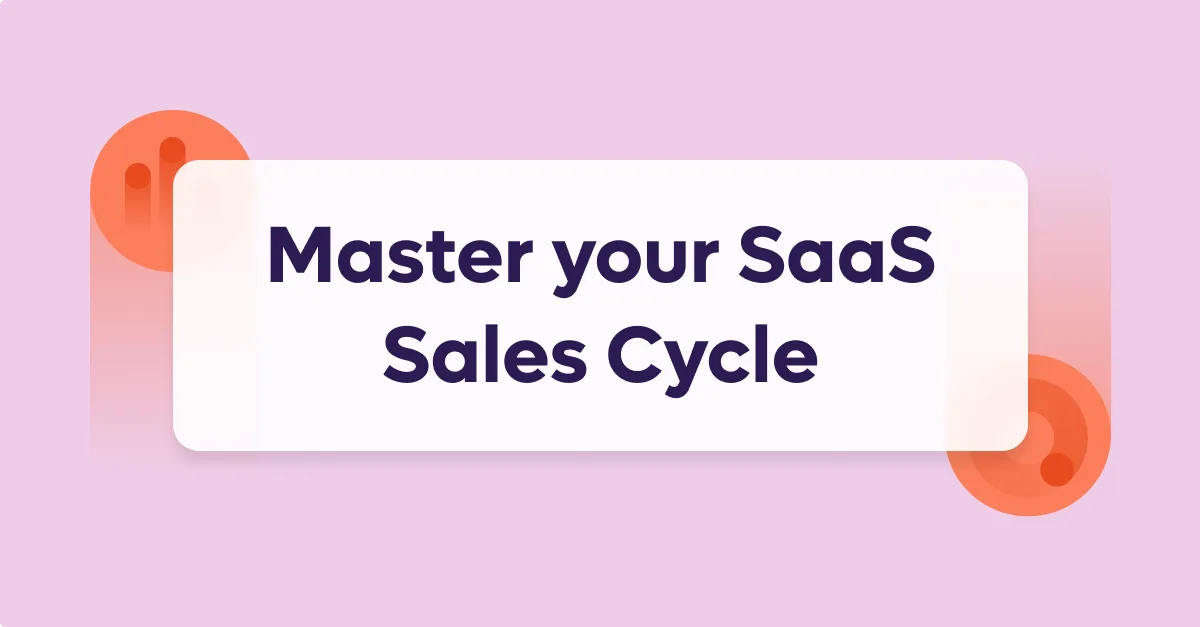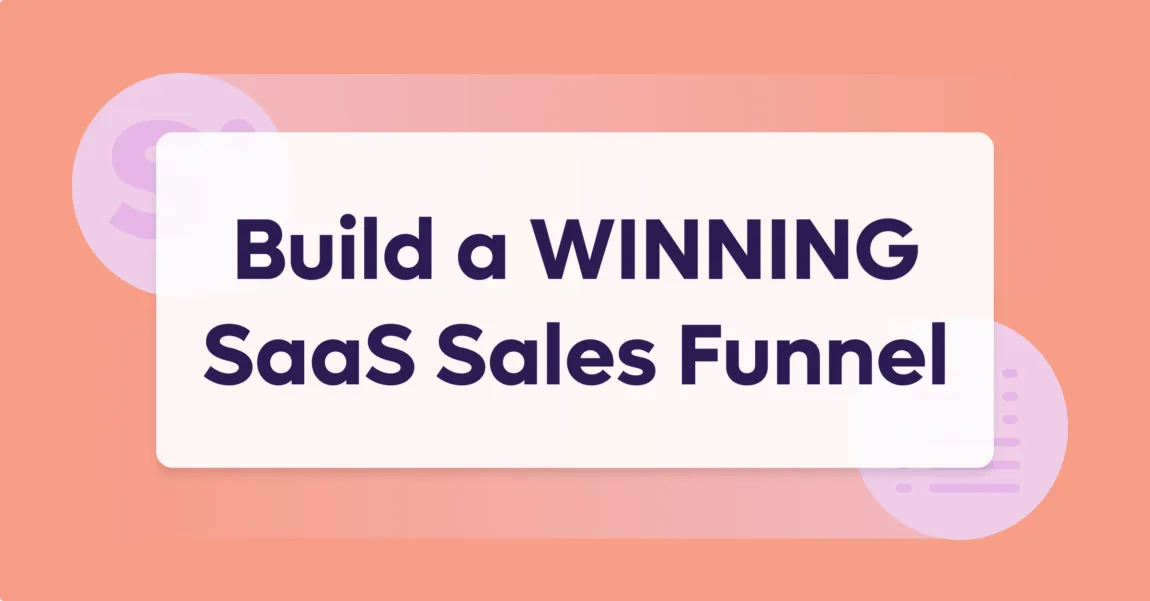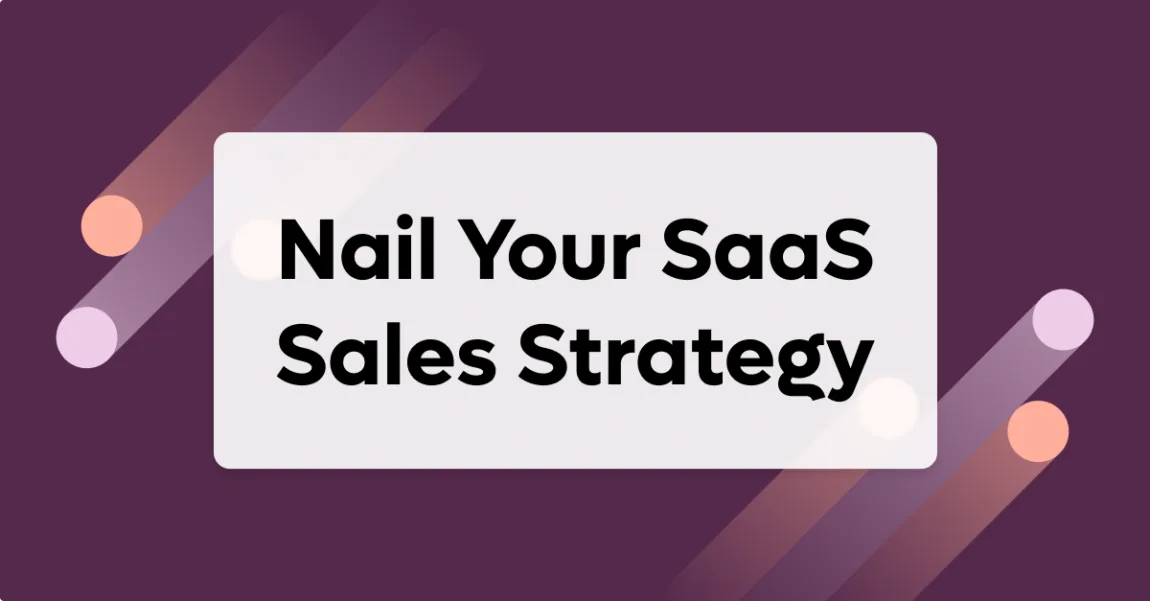Selling SaaS is a different game, with different rules.
The industry has developed its own specific set of skills, metrics, processes and sales cycle stages. SaaS companies understand that if they want to establish themselves and their product, scale their business and compete in this increasingly competitive market:
They’re going to have to lock down and master the stages of their B2B SaaS sales cycle.
No matter how complex your product, there are some fundamental principles you need to follow if you want to develop a winning SaaS sales engine and power long term growth.
Let us take you through the 7 stages of every B2B SaaS sales cycle and share our expert tips for mastering the process and turning your sales team into a selling machine!
The 7 SaaS Sales Cycle Stages
1. Identify your ICP
The first and most important thing to do to set up your sales cycle for success is to identify your Ideal Customer Profile (ICP).
In the old days of selling people would just call everybody. But those days are long gone!
When it comes to understanding your absolute ideal customer with the perfect product-market fit, you have to dive into the data to understand where you do your best selling.
Thanks to CRM platforms – now is the best time to sell!
Because unlike the old days, you’ve got access to all the data. Your CRM shows you your ‘close’ percentage by vertical market. And if you’re smart, you can use this data to show you exactly where you need to spend your time.

As tempting as it is to cast a wide net and see what sticks, limit your attention to the customer profile of the conversations where you get excited and energized – because that’s where the treasure is!
Remember, the riches are in the niches.
Focus on where you’re getting the most traction and the highest return on investment. Then become an expert and really nail that industry!
The more intimately you know your ICP; who they are, how they work, what makes them tick and what their pain points are, the quicker they’re going to understand that your service is an absolute must-have for them.
2. Prospecting
So, you know your ICP, you know their industry inside out, you’ve studied their pain points (and their every move!)
Now you just need to get through to them. Easy, right?
If only!
The hardest part of the SaaS sales process is getting to the right people.
This is only made harder by the revolution of the ‘empowered buyer’.
Prospects no longer want to talk to a salesperson until they’re 70-80% through the sales process.
So you’re going to be fighting an uphill battle, and there’s a few different approaches you can take. But regardless of your chosen methods, persistence at the prospecting stage is key.
In order to attract the attention of your ICP, you’ll need to adopt one of two approaches: active prospecting (outbound) or passive prospecting (inbound).
Whether you should adopt an active or passive approach depends on the profile of your company and the nature of your product.
Active prospecting
Active prospecting is typically a better option for smaller companies or companies with a very specific set of buyer personas.
Active SaaS lead generation is all about detecting high potential prospects and making the initial approach via phone or email.
The array of communication methods we have at our disposal creates a golden age for outbound sales – if you’re engaging professionally and doing it the right way!
The right way to do active prospecting is to understand that you’re here to help not to sell.
Helping people is the foundation for engagement.
When you’re calling your ideal customer in a way that’s helpful to your prospect, rather than trying to push the sale, you can turn the old style cold calling into a new way of outbound warm calling.
This can be just as effective as inbound when done right.
Passive prospecting
A passive approach can be more effective for self-service companies, companies with a more extensive profile and companies targeting multiple ICPs and enterprise organizations.
Passive prospecting is all about inbound marketing methods that add leads to your sales funnel. To generate SaaS leads with a passive approach you have a ton of marketing methods at your disposal.
Think high-quality SEO content, online seminars, video series, webinars, whitepapers and research reports.
Whether you choose an outbound or inbound approach, you’ve got to actually get through to your prospect.

Many people say ‘no one picks up the phone anymore’ – and to some extent, they’re right.
There’s only a 4-7% chance that someone will pick up your first call. So what do you do? You have to be ‘professionally persistent.’
According to Dan Tyre Sales Director of Hubspot, people do pick up their phone, you just have to do it right!
“It’s a refined skill that takes time” Tyre says, but it all comes down to creating visibility, getting your ICP’s attention and establishing connection.
According to Tyre the best practice is to “call 4 times over a span of 12 days” and that the 4th call is the ‘money call’.
But don’t forget to email and voicemail between each one, and to maximize your chances of engagement, use video in your prospecting emails!
3. Qualifying
Generating a pipeline full of relevant leads is a good start, but it’s still just a start.
To avoid wasting your energies in the wrong places, you’ve got to identify your most promising leads.
Remember, you’re not for everyone – so be selective.
Let’s face it. There are a load of lead qualification platforms out there. But whichever one you choose, the point stays the same:
Establish your highest quality leads and separate your ready-to-buys from the window shoppers.
There are some phenomenal tools out there, but while a well placed form or chatbot can go a long way, when it comes to qualifying leads the best method is as old as time— get on the phone to your lead and talk to them!
When you do get your prospect on the phone, it shouldn’t take more than a few carefully placed questions to know whether pursuing this lead is worth your time and energy.
Don’t forget to practice active listening to really get to the bottom of whether this prospect is a match.
4. Presenting
Presenting is where the real fun starts.
Sales has come a long way from the 1980s when all you had to do to sell to someone was take them to lunch.
According to Dan Tyre modern SaaS sales has become an art form that is hyper thoughtful, super intelligent and psychology focussed.
The number one skill you need to master for turning your prospect into a buyer is the ability to meet your prospects at their level.
Did you know, there’s actually a LinkedIn plugin called ‘Crystal Knows’ that tells you the personality, behavior traits and preferences of the person you’re about to speak to?
I know, crazy!
But a true salesperson can see their prospect’s personality characteristics from a glance at a picture and three minutes of research on their LinkedIn profile.
Understanding these characteristics will help you determine how to modify your behavior to maximize connection when presenting your product.
Pro tip: you want to sound sharp, you want to sound excited to be talking to them and you want to remember to just be human.
5. Objection handling
During the process of presenting your software, your prospect may reveal concerns they have about product fit or pricing.
Getting your prospect to talk is the hardest part of the process, so get them talking and practice active listening.
Make sure you’re engaging, listening and delivering value to explain how your product can be of service to their needs.
If the concern is about product fit, dig deeper to understand the issues.
If the concern is about price, work together with your prospects to help them understand the value of your product and how it addresses their pain points.
You have to figure out the way to present the information so that:
a) you understand your prospect’s problems
b) you’re asking the right questions so that they’re forced to think about the problem in a different way

If your lead is concerned about a missing feature, ask questions to uncover why they are looking for that specific feature. Once you know what they actually need, you can demonstrate how your product’s existing features can solve the problem at hand.
If the client is really worth the effort, you can always go ahead and ask your product team if integrating this particular feature is a possibility.
6. Closing
This is your opportunity to turn your prospect into a customer. It’s what every sales process is leading up to!
Once your prospect is on board, seal the deal and sign them up for the subscription package of their choosing.
If necessary, throw in an incentive to make it happen.
At Superlegal, we know how important it is to bring your sales cycle to a close, fast!
So we set out to build a SaaS contract review and negotiation solution optimized for accelerating your sales cycle and reducing time to close by up to 70%.
To discover how we can help you close your SaaS sales cycle, try Superlegal for free today.
7. Nurturing
Congratulations, you’ve closed! But did you think you were done?
Not so fast.
Closing isn’t the end of your interaction with your customers. This is especially true in the world of SaaS where customers need some serious love and care if they’re going to remain loyal to you.
The best SaaS companies retain their customers by offering them next-level customer support, comprehensive training and a range of useful upsells.
This keeps customers engaged with your product and makes sure to keep them with you for longer.
In short, aim to make your users feel valued and heard. Don’t assume that you’ve got them for life – retained customers have to be earned.
It’s a competitive world out there and if your customers are going to stay with you for the long run, you’re going to have to put the work in.
SaaS Sales Cycle Stages in a Nutshell
So there we have it. The SaaS sales cycle stages are as simple as: identifying your ICP, prospecting, qualifying, presenting, objection handling, closing and nurturing.
Remember, not every SaaS product will have an identical sales cycle. The length of your sales cycle will vary depending on a range of factors from the type of customer to the price point of your software.
However, whilst every product’s sales cycle will vary, these seven fundamentals will always be present.
One Final Word of Advice
The most important tip for mastering your B2B SaaS sales cycle is to keep track of the data and test as you go.
Track what’s going on when your reps are closing, and what’s going on when they don’t.
If you close a deal, ask your prospect why they chose you over the competition. If a deal slips through the cracks, don’t shy away from asking your prospect what went wrong.
Appeal to them on a human level and get some solid intel on what’s working, because this information is gold dust to your SaaS sales cycle.
Keep experimenting, learning and never be afraid to refine the process as you go. Every sale and lost deal is vital data and an opportunity to learn how to achieve true mastery and the ultimate goal – to sell more!








By entering your email, you agree to our Terms & Conditions and Privacy Policy.